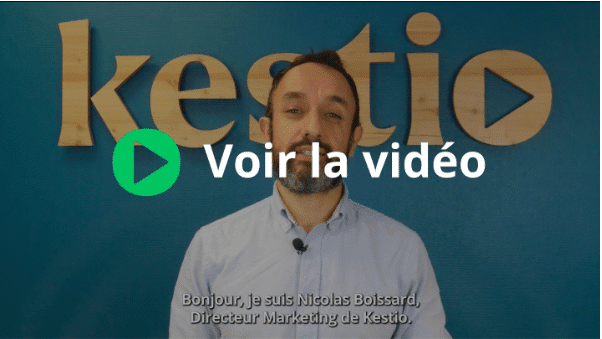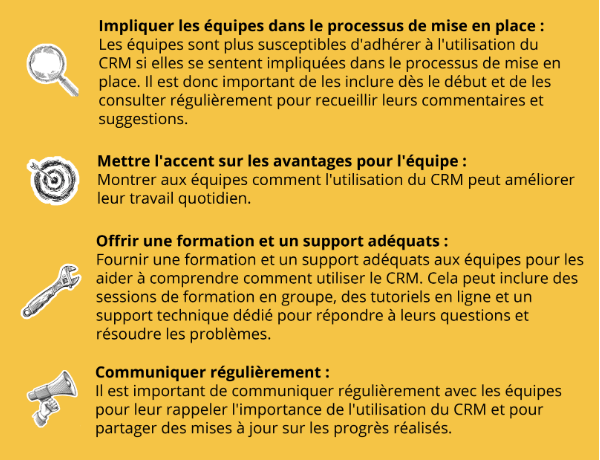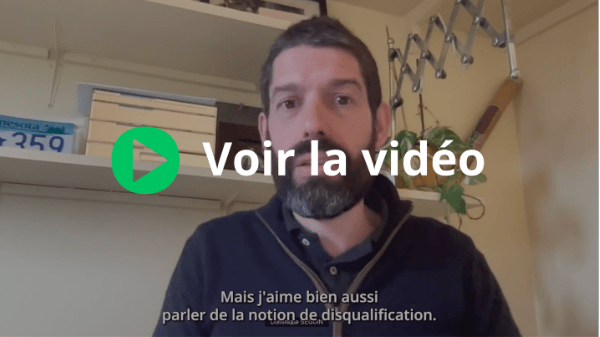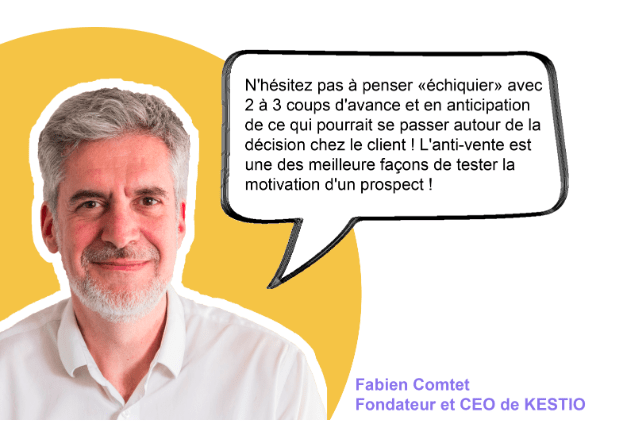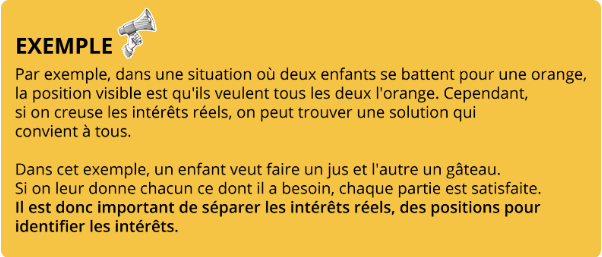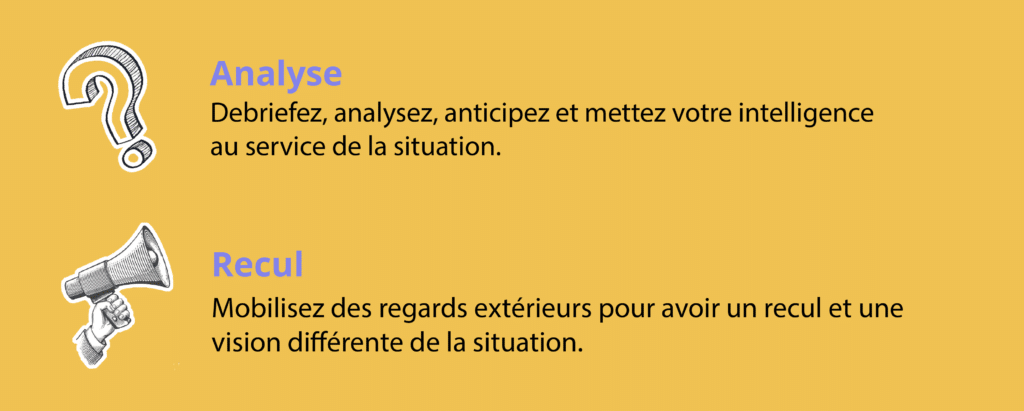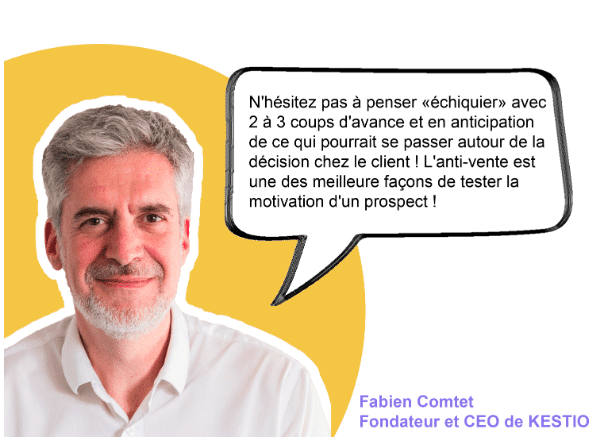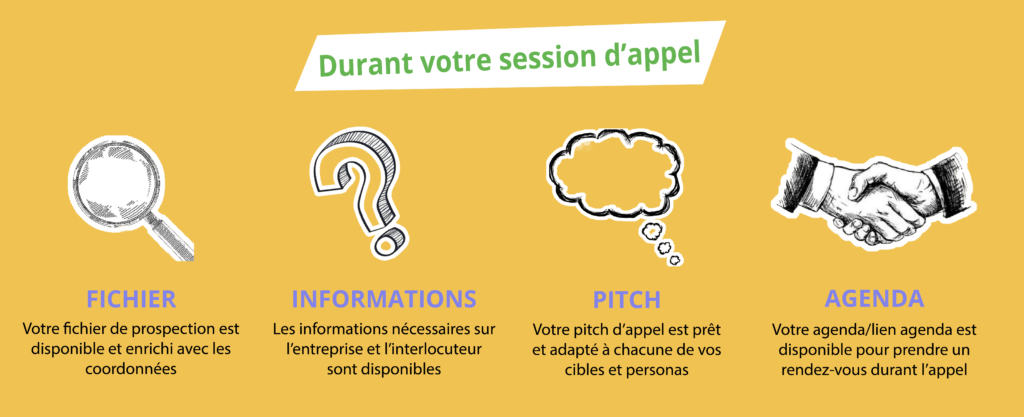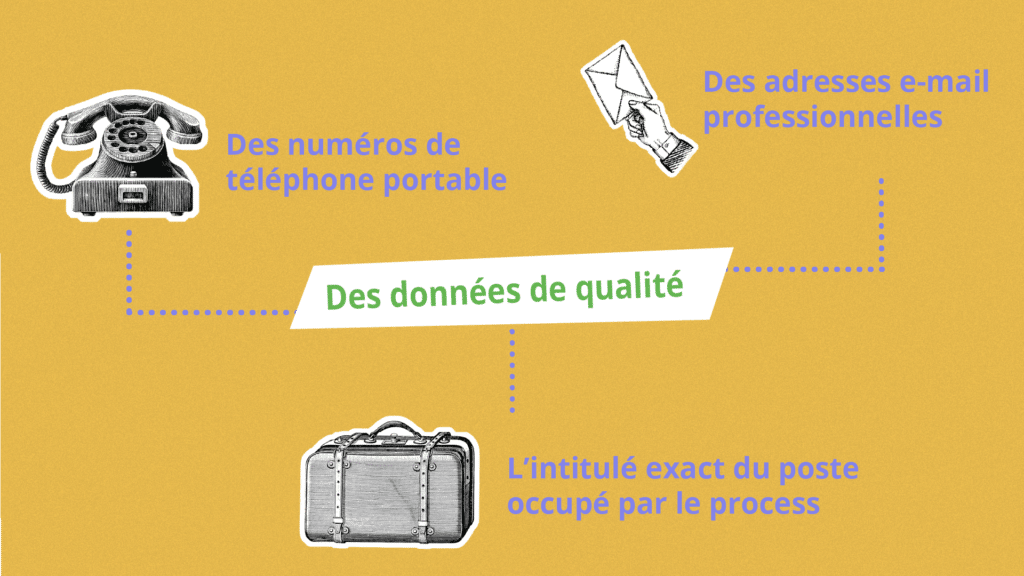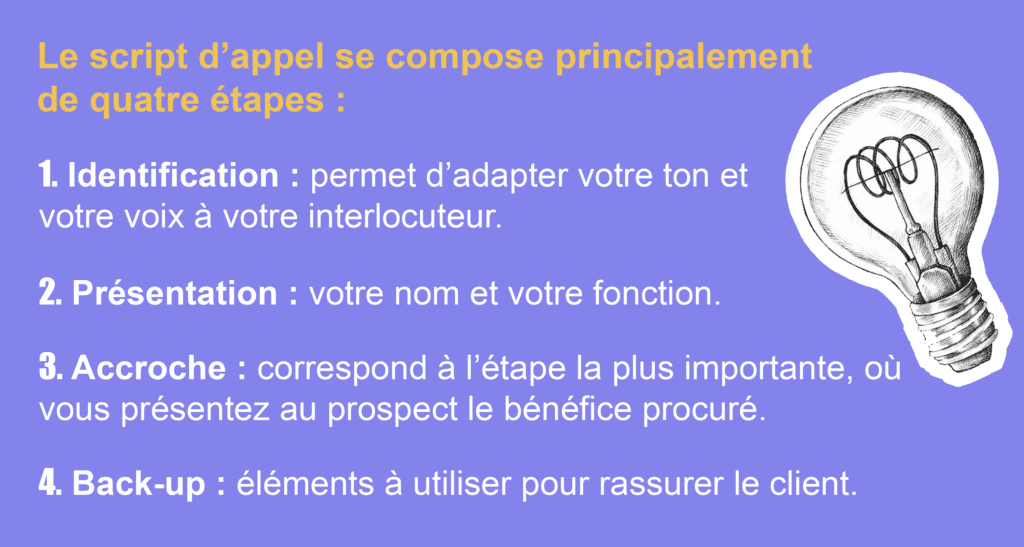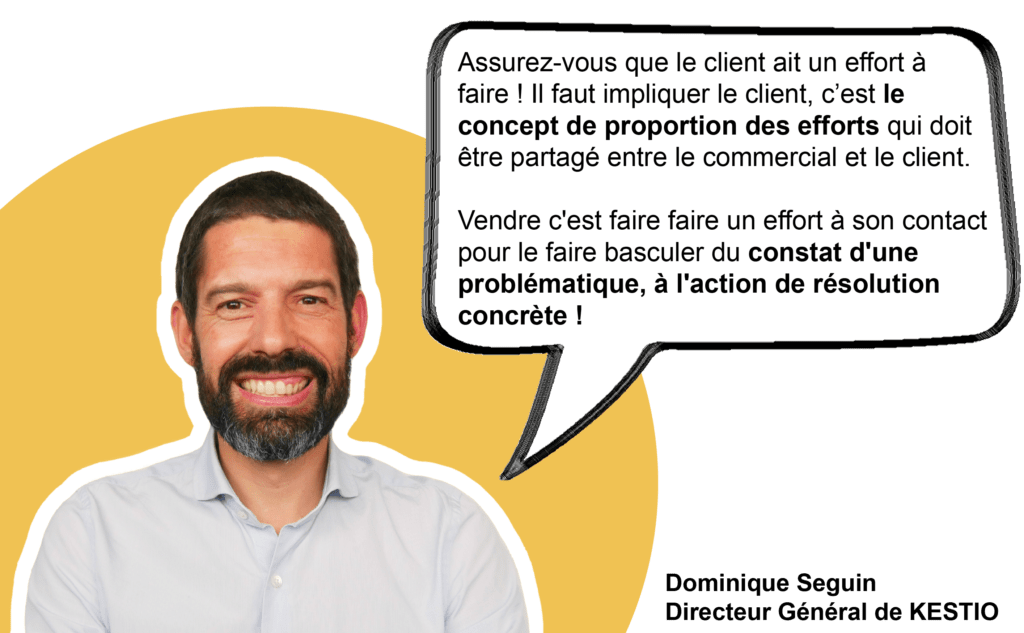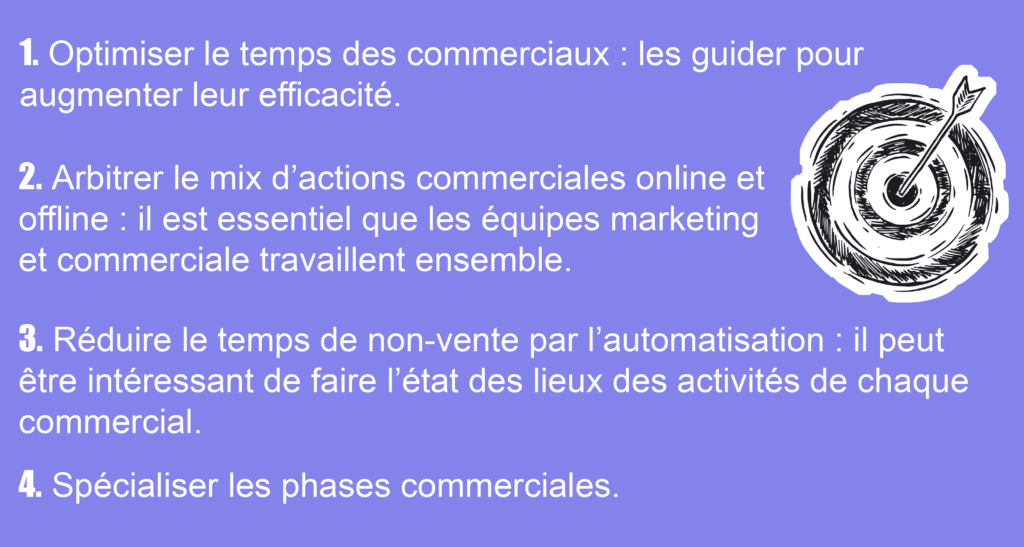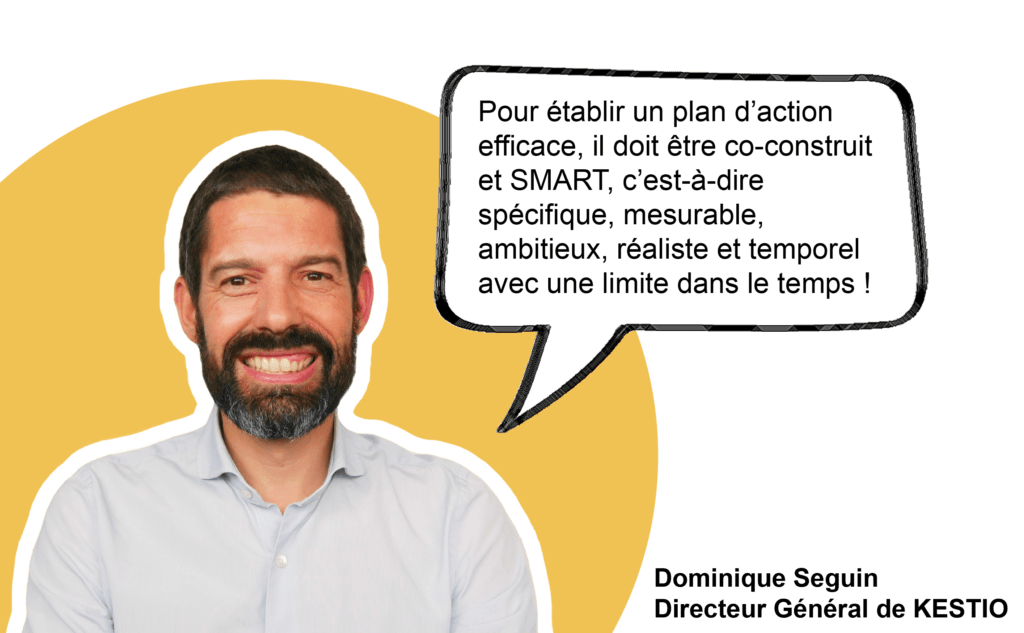Are you familiar with "Smarketing?"
This term, born from the combination of the words "Sales" and "Marketing", refers to the balance and collaboration around common goals between the sales and marketing departments of a company.
But when these two departments are no longer in agreement, the productivity of the entire company suffers.
According to a study by Forrester Research, companies with misaligned marketing and sales teams experience an annual revenue loss of approximately 10%*.
How to move away from a siloed approach to create a real synergy between sales and marketing?
Today, we are sharing our 4 keys to success!
*Marketing Enablement Improves Business Outcomes — Show Me The Value, Forrester Research, 2022
KEY #1 - Use a CRM
By using a CRM, teams can track all interactions with customers and prospects in real time, allowing them to better understand their needs and preferences.
This deeper understanding of clients and prospects enables marketing and sales teams to better adjust their strategy in real-time, based on the results obtained.
In addition, by tracking the results of each marketing action, it is possible to associate an ROI with each of them, which is essential to measure the effectiveness of each campaign.

Better understanding
Using a CRM is also an effective way to strengthen collaboration between marketing and sales teams.
By sharing information about customers and prospects, teams can better understand the needs and preferences of prospects, which allows them to better advise them and offer solutions tailored to their needs.

Additional opportunities
By working together, teams can improve the quality of service offered to customers and prospects, strengthen loyalty, and increase sales.
This relationship of trust between clients and the company also helps to generate additional business opportunities and strengthen the company's reputation.
If you would like an expert to help you optimize your teams' use of your CRM, click on the button below.
The objective of this exchange is to provide you with the keys to initiate change.
KEY #2 - Monitor your metrics
To ensure effective collaboration between marketing and sales teams, it's essential to have clear and precise metrics to measure the results of each action.
Indeed, these metrics allow for a better understanding of the impact of marketing actions on sales and for better adjusting strategies based on the results obtained.
From a marketing perspective, it's important to track the number of leads needed to achieve the company's revenue goals.
This metric helps to better understand the effectiveness of marketing actions and to adjust strategies based on the results obtained.
On the sales side, it is important to measure the responsiveness and quality of lead follow-up and appointment scheduling.
This metric measures the quality of lead follow-up and identifies areas for improvement to better meet customer needs.
Additionally, it's important to monitor the conversion rate of leads into customers to measure the effectiveness of each stage in the sales process.
For example, if a company generates 100 leads per month but only manages to convert 10% of them into customers, it is important to understand why the other leads were not converted into customers. This metric helps to better understand the points to improve in order to better convert leads into customers.
Finally, it is important to measure the acquisition cost of each customer to better understand the effectiveness of marketing and sales activities.
For example, if the company spent 10,000 euros on advertising to generate 100 leads and ultimately acquired 5 new customers, the acquisition cost per customer is 2,000 euros.
This metric helps to better understand the profitability of each marketing and sales action and to adjust strategies accordingly.
Not sure which metrics to track? Start by working on your Business Flow to identify the number of leads needed to achieve your goals.
Click the button below to download our Business Flow construction template.
KEY #3 - Bring your teams together
Once these metrics are defined, communicate them regularly to your marketing and sales teams so that they are ingrained in their daily routine.
To achieve this, team meetings are an excellent tool!
Bringing your two departments together effectively aligns them on a common strategy for :
- Your clients
- Your offers
- Your campaigns
- Your results
To offer attractive content that meets the needs of your prospects, your marketers need feedback and sales arguments from your sales representatives. And your sales representatives need to be aware of all current marketing campaigns to ensure a smooth customer buying cycle.
Organize regular meeting times between your sales and marketing teams to foster their collaboration:
- Meetings to launch the week and review objectives and priorities 🎯
- Brainstorming workshops where your two teams can exchange ideas and address a common problem 🧠
- Cross-training to upskill your employees in complementary areas of expertise 📚
- Team building activities to strengthen team cohesion 🤝
Company seminars allow you to bring together all the activities necessary for your teams to collaborate!
These are important moments for the life of your company because they strengthen your corporate culture and the sense of belonging of your employees.






